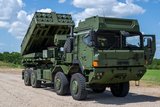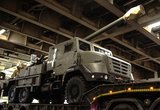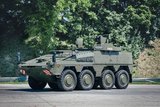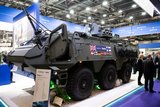Raytheon lab tests AMRAAM-ER
Raytheon has completed lab testing the extended-range variant of its AMRAAM ground-based missile, the AMRAAM-ER, the company announced on 10 June.
The tests showed that the AMRAAM-ER can be integrated and deployed using the NASAMS launcher. The missile can be combined with the launcher and AN/MPQ-64F1 Sentinel radar for medium-range air defence.
The AMRAAM-ER is being integrated with the Evolved Sea Sparrow Missile rocket motor in order to address higher altitude and longer range threats.
With the lab tests complete, Raytheon will move forward with integrating the system and launcher in preparation for live fire demonstrations. The company is set to conduct a flight test of the ground defence missile before the end of 2015.
Mike Jarrett, vice president of air warfare systems, Raytheon, said: 'AMRAAM-ER significantly expands the capability of our proven ground-based air defence system. The new surface-launched missile will be even faster and more manoeuvrable than the current AMRAAM.
'By leveraging components from existing weapons programmes, Raytheon is on a fast track to deliver AMRAAM-ER affordably and with very low risk.'
Raytheon and partner Kongsberg have delivered over 70 NASAMS medium-range air defence fire units to seven countries. NASAMS is currently NATO's most commonly-used short-range and medium-range air defence system.
More from Land Warfare
-
![Lithuanian 1st Division to achieve initial operating capability in 2026]()
Lithuanian 1st Division to achieve initial operating capability in 2026
Lithuania is one of the countries stepping up its defences in the face of the war in Ukraine with a particular focus on its neighbour and Russian ally Belarus, which has been making incursions into Lithuania’s airspace with balloons and drones.
-
![Beyond Survivability: How Active Protection Systems Are Empowering Commanders (Podcast)]()
Beyond Survivability: How Active Protection Systems Are Empowering Commanders (Podcast)
As threats diversify and intensify, APS are proving essential not just for vehicle protection but also for enhancing operational freedom, effectiveness and mission success in contested environments.
-
Medium knocked out of British Army LMP, with CAVS as heavyweight champion
As the British Army seeks to modernise and consolidate its diverse vehicle fleet, yet another change in direction is underway.






















